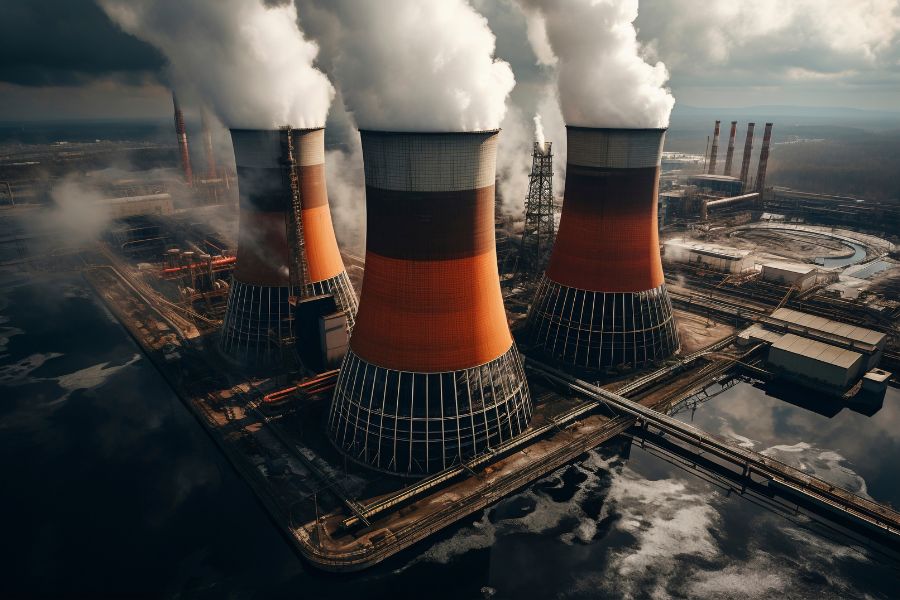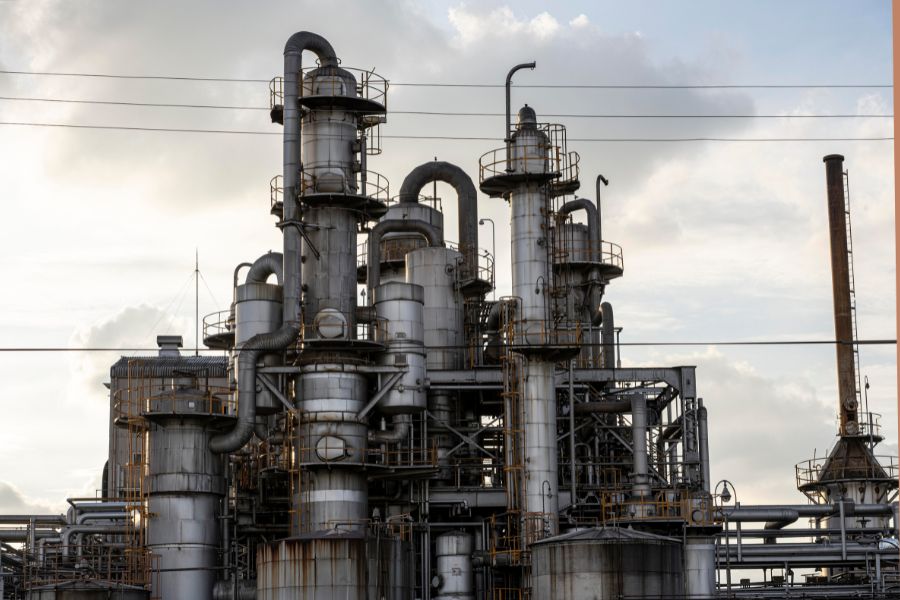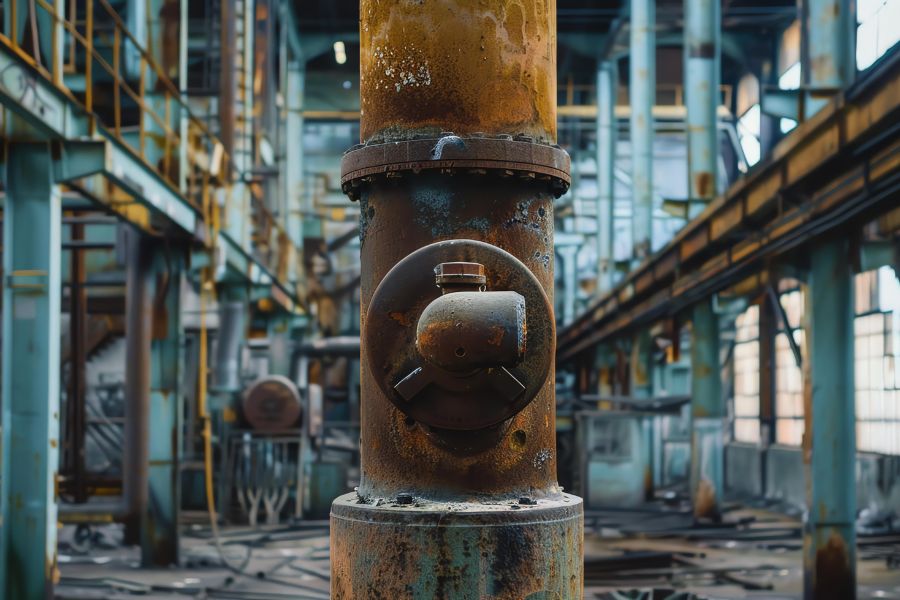Understanding Corrosion in Power Plants: Prevention & Control
Power plants around the world rank corrosion as one of their top issues. Severe degradation in operational efficiency and plant life of critical systems such as boilers, turbines, and cooling systems may result in costly repairs, efficiency losses, and safety risks. Understanding the causes and effects of corrosion in power plants plays a pivotal role in ensuring operational efficiency and safety through different preventive measures. This article delves into the various types of corrosion, their sources, and the various preventative and control methods that can mitigate their detrimental effects.
Corrosion in Power Plants: Common Causes
Power plants operate in harsh conditions, which may accelerate corrosion. This is primarily due to various environmental and operational factors.
Water and Moisture: Water is the prime reason for corrosion. Boilers and cooling towers have applications in a power plant at various stages of operation. When water comes into contact with metal parts, the oxidation process causes them to rust. Dissolved gases like oxygen and carbon dioxide accelerate the process.
Thermal variation and thermal shock: Because of changes in load and demand during operation, power plants experience upset temperatures. Cyclic thermals may cause the metal parts to expand and contract, leading to the formation of micro-cracks and other weak spots in the structure. Such spots are very prone to corrosion.
Chemical Reactions and Environmental Factors: The environment in which a power plant operates also plays a role. Exposure to gases like sulfur dioxide and chlorine, which are often present in industrial environments, can cause corrosive chemical reactions on metal surfaces. Additionally, pollutants in the air or water sources used in power plants can introduce corrosive elements into the system.
Corrosion in Different Systems: All systems within a power plant are not born equal when it comes to their propensity to corrode. The surrounding environment poses the greatest risk to boilers, which typically carry high-temperature steam. On the other hand, cooling and turbine systems are among the places where water and hot components are constantly interacting, thus adding to their vulnerability to corrosion.
Types of Corrosion in Power Plants
The different forms of corrosion that attack power plants bring about their own sets of complications:
General Corrosion: This is the most common form, in which a uniform layer of rust or corrosion forms on a metal surface. In due time, it causes the metal to thinning slowly, resulting in reduced strength and structural integrity.
Localised corrosion: Localised corrosion refers to a certain point at which pitting or crevice corrosion occurs. Pitting is dangerous because it can create deep holes in metals, making the structure totally unsafe. Crevice corrosion occurs when small gaps in any material trap moisture and contaminants, thereby accelerating the corrosion process.
Stress Corrosion Cracking: Stress Corrosion Cracking (SCC) is caused by the presence of metals under tensile stress in a corrosive environment. The interaction of these two factors promotes the formation of cracks, which can grow with extreme speed, resulting in sudden equipment failure, such as turbine blades.
Galvanic Corrosion: In a corrosive environment, galvanic corrosion refers to the electrochemical reaction that occurs when two dissimilar metals come into contact with each other. In the process, one metal corrodes more than the other, thereby having serious effects on the weaker material.
Effects of Corrosion on Power Plant Operations
Corrosion can have significant impacts on power plants.
Degradation of Equipment: The metal component undergoes a gradual deterioration due to corrosion, which further reduces its strength and durability. Performance degradation in critical systems involving boilers, turbines, and piping introduces inefficiency and possible failures.
Increased maintenance cost: As the corrosion persists, corrections and replacements become more frequent. The frequency of routine maintenance increases, and the costs of operation increase accordingly. Extreme conditions sometimes necessitate the shutdown of an entire system for repairs, resulting in a financial loss.
Reduced Efficiency and Unplanned Downtime: The corroded equipment has reduced efficiency, further contributing to the plant’s general performance decline. A decrease in efficiency raises energy consumption, which increases operating expenses. Equipment that has rusted unexpectedly breaks, causing unscheduled plant outages that upset production schedules and incur large revenue losses.
Safety Risks and Hazards: In this case, corrosion can lead to loss of structural integrity of equipment and possible accidents resulting in injury to personnel or damage to the environment. In extreme conditions, these parts suddenly fail, usually causing fatal accidents that can put human lives in danger along with environmental hazards.
Corrosion Prevention and Control Methods
By using one or a combination of the following strategies for prevention or control, can minimize the effects of corrosion in power plants:
Material Selection and Protective Coatings: To reduce the risks of corrosion in power plants, people commonly select and use corrosion-resistant materials like stainless steel or any other corrosion-resistant alloy. Besides, protective coatings, such as epoxy or ceramic coatings, serve as a physical barrier that protects the metal surface against corrosive agents.
Cathodic Protection Systems: These systems are one of the generally applied methods for prevention against corrosion, particularly in underground or submerged systems. Using a sacrificial anode or an impressed current system, the metal structure becomes the cathode and does not corrode.
Use of Corrosion Inhibitors: You can reduce the rate of corrosion by adding certain chemicals, known as inhibitors, to the water or any other fluid in the power plant system. They act by forming a protective film on the metal surface, which keeps the corrosive agent away from the surface.
Regular Monitoring and Maintenance Programs: Early detection of corrosion is critical for containing severe damage. Regular inspections, combined with advanced monitoring technologies, help to identify signs of corrosion before they can cause equipment failure. If there happens to be an effective maintenance program, it will enable repairs at the right time and prolong the equipment’s lifetime.
Advanced Technologies for Corrosion Management
Advanced technologies play a crucial role in effectively managing corrosion.
Real-time Corrosion Monitoring Systems: These systems use sensors to monitor corrosion in real time; therefore, they allow plant operators to take immediate action should anything go off-kilter. This proactive approach helps avert the danger of sudden equipment failure.
Predictive Maintenance and Corrosion Analytics: Predictive maintenance uses data analytics and machine learning to predict when any piece of equipment is going to fail due to corrosion. It would be possible for power plants to prevent unplanned downtime and expensive repairs by addressing the issues before they happen.
New Materials Resistant to Corrosion Development: Advances in materials science will lead to the development of new alloys and coatings that are far superior to their predecessors in withstanding corrosion. These materials could potentially multiply the life of equipment operating under harsh conditions.
FAQs: Frequently Asked Questions
What is corrosion, and why is it a concern in power plants?
Corrosion is the gradual degradation of metal caused by chemical reactions, primarily oxidation. In power plants, corrosion can lead to equipment failure, reduced efficiency, increased maintenance costs, and safety hazards. Addressing corrosion is essential to ensure the longevity and operational reliability of critical systems.
What are the common causes of corrosion in power plants?
The common causes of corrosion in power plants include:
- Water and moisture exposure, leading to oxidation
- Temperature fluctuations causing thermal stress
- Chemical reactions from gases like sulfur dioxide
- Pollutants and environmental factors in the surrounding area
What are the main types of corrosion that affect power plants?
The primary types of corrosion found in power plants include:
- General corrosion: Uniform rusting of metal surfaces.
- Localized corrosion: Pitting and crevice corrosion affecting specific areas.
- Stress corrosion cracking (SCC): Caused by tensile stress and corrosive environments.
- Galvanic corrosion: Occurs when two dissimilar metals come into contact in a corrosive environment.
What are the effects of corrosion on power plant operations?
Corrosion can lead to:
- Equipment degradation, reducing strength and performance.
- Increased maintenance and operational costs due to repairs.
- Reduced efficiency, causing unplanned downtime and lower output.
- Safety risks, as corroded parts may fail and cause accidents or system failures.
How can corrosion in power plants be prevented?
Corrosion can be prevented by:
- Using corrosion-resistant materials and protective coatings.
- Implementing cathodic protection systems.
- Using corrosion inhibitors in water and other fluids.
- Regular monitoring and maintenance programs to detect early signs of corrosion.
Closing Insights
At CORCON, we understand that corrosion in power plants is a serious problem that needs to be addressed to ensure the equipment operates safely and effectively. Power plant operators can put effective preventive and control measures in place by developing a greater understanding of the causes and effects of corrosion.
Professionals may efficiently resist corrosion by enrolling in our specialised courses, which include cathodic protection and the coating inspector program. To reduce the effects of corrosion in power plants and increase the lifespan of vital systems, routine monitoring, the use of protective materials, and adoption of cutting-edge technologies are vital.
Image Reference: Freepik
Disclaimer: All trademarks, logos, and brand names are the property of their respective owners. All company, product, and service names used in this website are for identification purposes only. Use of these names, trademarks, and brands does not imply endorsement.


